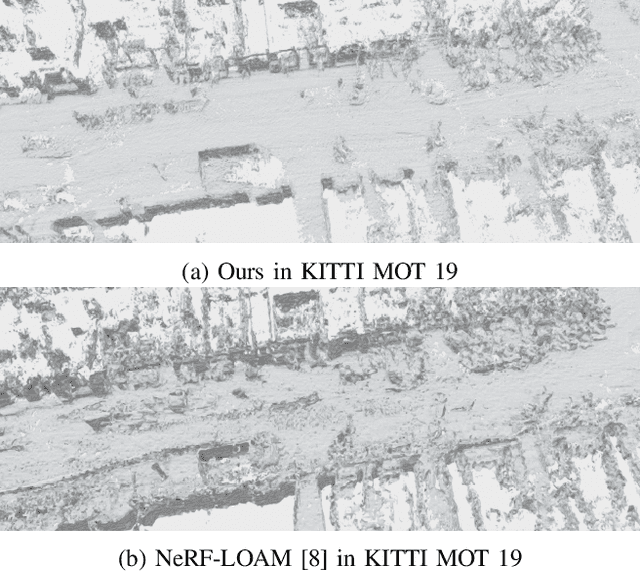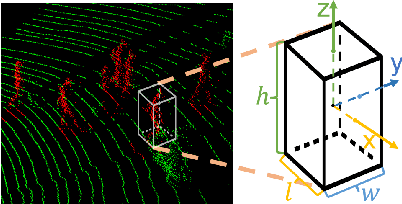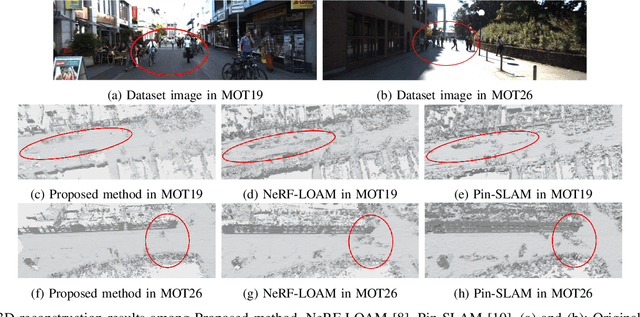Ru Li
Memorization $ eq$ Understanding: Do Large Language Models Have the Ability of Scenario Cognition?
Sep 05, 2025Abstract:Driven by vast and diverse textual data, large language models (LLMs) have demonstrated impressive performance across numerous natural language processing (NLP) tasks. Yet, a critical question persists: does their generalization arise from mere memorization of training data or from deep semantic understanding? To investigate this, we propose a bi-perspective evaluation framework to assess LLMs' scenario cognition - the ability to link semantic scenario elements with their arguments in context. Specifically, we introduce a novel scenario-based dataset comprising diverse textual descriptions of fictional facts, annotated with scenario elements. LLMs are evaluated through their capacity to answer scenario-related questions (model output perspective) and via probing their internal representations for encoded scenario elements-argument associations (internal representation perspective). Our experiments reveal that current LLMs predominantly rely on superficial memorization, failing to achieve robust semantic scenario cognition, even in simple cases. These findings expose critical limitations in LLMs' semantic understanding and offer cognitive insights for advancing their capabilities.
Explaining Black-box Language Models with Knowledge Probing Systems: A Post-hoc Explanation Perspective
Aug 23, 2025Abstract:Pre-trained Language Models (PLMs) are trained on large amounts of unlabeled data, yet they exhibit remarkable reasoning skills. However, the trustworthiness challenges posed by these black-box models have become increasingly evident in recent years. To alleviate this problem, this paper proposes a novel Knowledge-guided Probing approach called KnowProb in a post-hoc explanation way, which aims to probe whether black-box PLMs understand implicit knowledge beyond the given text, rather than focusing only on the surface level content of the text. We provide six potential explanations derived from the underlying content of the given text, including three knowledge-based understanding and three association-based reasoning. In experiments, we validate that current small-scale (or large-scale) PLMs only learn a single distribution of representation, and still face significant challenges in capturing the hidden knowledge behind a given text. Furthermore, we demonstrate that our proposed approach is effective for identifying the limitations of existing black-box models from multiple probing perspectives, which facilitates researchers to promote the study of detecting black-box models in an explainable way.
Path-Adaptive Matting for Efficient Inference Under Various Computational Cost Constraints
Mar 05, 2025



Abstract:In this paper, we explore a novel image matting task aimed at achieving efficient inference under various computational cost constraints, specifically FLOP limitations, using a single matting network. Existing matting methods which have not explored scalable architectures or path-learning strategies, fail to tackle this challenge. To overcome these limitations, we introduce Path-Adaptive Matting (PAM), a framework that dynamically adjusts network paths based on image contexts and computational cost constraints. We formulate the training of the computational cost-constrained matting network as a bilevel optimization problem, jointly optimizing the matting network and the path estimator. Building on this formalization, we design a path-adaptive matting architecture by incorporating path selection layers and learnable connect layers to estimate optimal paths and perform efficient inference within a unified network. Furthermore, we propose a performance-aware path-learning strategy to generate path labels online by evaluating a few paths sampled from the prior distribution of optimal paths and network estimations, enabling robust and efficient online path learning. Experiments on five image matting datasets demonstrate that the proposed PAM framework achieves competitive performance across a range of computational cost constraints.
Multi-level Matching Network for Multimodal Entity Linking
Dec 11, 2024Abstract:Multimodal entity linking (MEL) aims to link ambiguous mentions within multimodal contexts to corresponding entities in a multimodal knowledge base. Most existing approaches to MEL are based on representation learning or vision-and-language pre-training mechanisms for exploring the complementary effect among multiple modalities. However, these methods suffer from two limitations. On the one hand, they overlook the possibility of considering negative samples from the same modality. On the other hand, they lack mechanisms to capture bidirectional cross-modal interaction. To address these issues, we propose a Multi-level Matching network for Multimodal Entity Linking (M3EL). Specifically, M3EL is composed of three different modules: (i) a Multimodal Feature Extraction module, which extracts modality-specific representations with a multimodal encoder and introduces an intra-modal contrastive learning sub-module to obtain better discriminative embeddings based on uni-modal differences; (ii) an Intra-modal Matching Network module, which contains two levels of matching granularity: Coarse-grained Global-to-Global and Fine-grained Global-to-Local, to achieve local and global level intra-modal interaction; (iii) a Cross-modal Matching Network module, which applies bidirectional strategies, Textual-to-Visual and Visual-to-Textual matching, to implement bidirectional cross-modal interaction. Extensive experiments conducted on WikiMEL, RichpediaMEL, and WikiDiverse datasets demonstrate the outstanding performance of M3EL when compared to the state-of-the-art baselines.
Atomic Fact Decomposition Helps Attributed Question Answering
Oct 22, 2024



Abstract:Attributed Question Answering (AQA) aims to provide both a trustworthy answer and a reliable attribution report for a given question. Retrieval is a widely adopted approach, including two general paradigms: Retrieval-Then-Read (RTR) and post-hoc retrieval. Recently, Large Language Models (LLMs) have shown remarkable proficiency, prompting growing interest in AQA among researchers. However, RTR-based AQA often suffers from irrelevant knowledge and rapidly changing information, even when LLMs are adopted, while post-hoc retrieval-based AQA struggles with comprehending long-form answers with complex logic, and precisely identifying the content needing revision and preserving the original intent. To tackle these problems, this paper proposes an Atomic fact decomposition-based Retrieval and Editing (ARE) framework, which decomposes the generated long-form answers into molecular clauses and atomic facts by the instruction-tuned LLMs. Notably, the instruction-tuned LLMs are fine-tuned using a well-constructed dataset, generated from large scale Knowledge Graphs (KGs). This process involves extracting one-hop neighbors from a given set of entities and transforming the result into coherent long-form text. Subsequently, ARE leverages a search engine to retrieve evidences related to atomic facts, inputting these evidences into an LLM-based verifier to determine whether the facts require expansion for re-retrieval or editing. Furthermore, the edited facts are backtracked into the original answer, with evidence aggregated based on the relationship between molecular clauses and atomic facts. Extensive evaluations demonstrate the superior performance of our proposed method over the state-of-the-arts on several datasets, with an additionally proposed new metric $Attr_{p}$ for evaluating the precision of evidence attribution.
Neural Implicit Representation for Highly Dynamic LiDAR Mapping and Odometry
Sep 26, 2024



Abstract:Recent advancements in Simultaneous Localization and Mapping (SLAM) have increasingly highlighted the robustness of LiDAR-based techniques. At the same time, Neural Radiance Fields (NeRF) have introduced new possibilities for 3D scene reconstruction, exemplified by SLAM systems. Among these, NeRF-LOAM has shown notable performance in NeRF-based SLAM applications. However, despite its strengths, these systems often encounter difficulties in dynamic outdoor environments due to their inherent static assumptions. To address these limitations, this paper proposes a novel method designed to improve reconstruction in highly dynamic outdoor scenes. Based on NeRF-LOAM, the proposed approach consists of two primary components. First, we separate the scene into static background and dynamic foreground. By identifying and excluding dynamic elements from the mapping process, this segmentation enables the creation of a dense 3D map that accurately represents the static background only. The second component extends the octree structure to support multi-resolution representation. This extension not only enhances reconstruction quality but also aids in the removal of dynamic objects identified by the first module. Additionally, Fourier feature encoding is applied to the sampled points, capturing high-frequency information and leading to more complete reconstruction results. Evaluations on various datasets demonstrate that our method achieves more competitive results compared to current state-of-the-art approaches.
Diff-Shadow: Global-guided Diffusion Model for Shadow Removal
Jul 23, 2024



Abstract:We propose Diff-Shadow, a global-guided diffusion model for high-quality shadow removal. Previous transformer-based approaches can utilize global information to relate shadow and non-shadow regions but are limited in their synthesis ability and recover images with obvious boundaries. In contrast, diffusion-based methods can generate better content but ignore global information, resulting in inconsistent illumination. In this work, we combine the advantages of diffusion models and global guidance to realize shadow-free restoration. Specifically, we propose a parallel UNets architecture: 1) the local branch performs the patch-based noise estimation in the diffusion process, and 2) the global branch recovers the low-resolution shadow-free images. A Reweight Cross Attention (RCA) module is designed to integrate global contextural information of non-shadow regions into the local branch. We further design a Global-guided Sampling Strategy (GSS) that mitigates patch boundary issues and ensures consistent illumination across shaded and unshaded regions in the recovered image. Comprehensive experiments on three publicly standard datasets ISTD, ISTD+, and SRD have demonstrated the effectiveness of Diff-Shadow. Compared to state-of-the-art methods, our method achieves a significant improvement in terms of PSNR, increasing from 32.33dB to 33.69dB on the SRD dataset. Codes will be released.
COTET: Cross-view Optimal Transport for Knowledge Graph Entity Typing
May 22, 2024Abstract:Knowledge graph entity typing (KGET) aims to infer missing entity type instances in knowledge graphs. Previous research has predominantly centered around leveraging contextual information associated with entities, which provides valuable clues for inference. However, they have long ignored the dual nature of information inherent in entities, encompassing both high-level coarse-grained cluster knowledge and fine-grained type knowledge. This paper introduces Cross-view Optimal Transport for knowledge graph Entity Typing (COTET), a method that effectively incorporates the information on how types are clustered into the representation of entities and types. COTET comprises three modules: i) Multi-view Generation and Encoder, which captures structured knowledge at different levels of granularity through entity-type, entity-cluster, and type-cluster-type perspectives; ii) Cross-view Optimal Transport, transporting view-specific embeddings to a unified space by minimizing the Wasserstein distance from a distributional alignment perspective; iii) Pooling-based Entity Typing Prediction, employing a mixture pooling mechanism to aggregate prediction scores from diverse neighbors of an entity. Additionally, we introduce a distribution-based loss function to mitigate the occurrence of false negatives during training. Extensive experiments demonstrate the effectiveness of COTET when compared to existing baselines.
Event GDR: Event-Centric Generative Document Retrieval
May 11, 2024Abstract:Generative document retrieval, an emerging paradigm in information retrieval, learns to build connections between documents and identifiers within a single model, garnering significant attention. However, there are still two challenges: (1) neglecting inner-content correlation during document representation; (2) lacking explicit semantic structure during identifier construction. Nonetheless, events have enriched relations and well-defined taxonomy, which could facilitate addressing the above two challenges. Inspired by this, we propose Event GDR, an event-centric generative document retrieval model, integrating event knowledge into this task. Specifically, we utilize an exchange-then-reflection method based on multi-agents for event knowledge extraction. For document representation, we employ events and relations to model the document to guarantee the comprehensiveness and inner-content correlation. For identifier construction, we map the events to well-defined event taxonomy to construct the identifiers with explicit semantic structure. Our method achieves significant improvement over the baselines on two datasets, and also hopes to provide insights for future research.
Leveraging Intra-modal and Inter-modal Interaction for Multi-Modal Entity Alignment
Apr 19, 2024



Abstract:Multi-modal entity alignment (MMEA) aims to identify equivalent entity pairs across different multi-modal knowledge graphs (MMKGs). Existing approaches focus on how to better encode and aggregate information from different modalities. However, it is not trivial to leverage multi-modal knowledge in entity alignment due to the modal heterogeneity. In this paper, we propose a Multi-Grained Interaction framework for Multi-Modal Entity Alignment (MIMEA), which effectively realizes multi-granular interaction within the same modality or between different modalities. MIMEA is composed of four modules: i) a Multi-modal Knowledge Embedding module, which extracts modality-specific representations with multiple individual encoders; ii) a Probability-guided Modal Fusion module, which employs a probability guided approach to integrate uni-modal representations into joint-modal embeddings, while considering the interaction between uni-modal representations; iii) an Optimal Transport Modal Alignment module, which introduces an optimal transport mechanism to encourage the interaction between uni-modal and joint-modal embeddings; iv) a Modal-adaptive Contrastive Learning module, which distinguishes the embeddings of equivalent entities from those of non-equivalent ones, for each modality. Extensive experiments conducted on two real-world datasets demonstrate the strong performance of MIMEA compared to the SoTA. Datasets and code have been submitted as supplementary materials.
 Add to Chrome
Add to Chrome Add to Firefox
Add to Firefox Add to Edge
Add to Edge